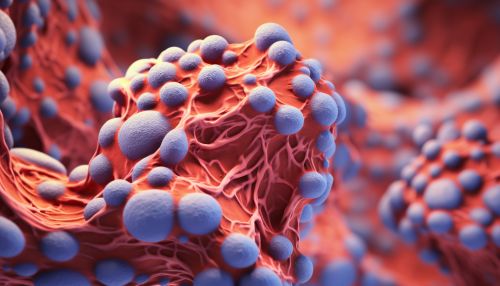Adrenaline
Introduction
Adrenaline, also known as epinephrine, is a hormone and neurotransmitter that plays a crucial role in the body's fight-or-flight response. It is produced in the adrenal glands, which are located on top of the kidneys.


Production and Release
Adrenaline is synthesized in the adrenal medulla, the inner part of the adrenal gland, from the amino acid tyrosine. The process involves several enzymatic reactions, starting with the conversion of tyrosine to DOPA by the enzyme tyrosine hydroxylase. DOPA is then converted to dopamine, which is subsequently converted to norepinephrine and finally to adrenaline.
The release of adrenaline is primarily triggered by stress signals received from the brain, particularly the hypothalamus and the pituitary gland. These signals are transmitted via the sympathetic nervous system, a branch of the autonomic nervous system that regulates the body's unconscious actions.
Physiological Effects
Adrenaline exerts its effects by binding to adrenergic receptors, which are found on the surface of various cells throughout the body. There are several types of adrenergic receptors, and the specific physiological response depends on the type of receptor to which adrenaline binds.
Cardiovascular System
In the cardiovascular system, adrenaline increases heart rate, contractility, and stroke volume, leading to an overall increase in cardiac output. It also causes vasoconstriction in certain blood vessels and vasodilation in others, thereby redistributing blood flow to the muscles and brain, which are essential for the fight-or-flight response.
Respiratory System
In the respiratory system, adrenaline causes bronchodilation, which increases the diameter of the bronchial tubes and allows for increased airflow to the lungs. This effect is beneficial in conditions such as asthma and COPD, where the airways are constricted.
Metabolic Effects
Adrenaline also has significant metabolic effects. It stimulates glycogenolysis, the breakdown of glycogen to glucose, in the liver and muscles, providing a quick source of energy. It also stimulates lipolysis, the breakdown of fats to fatty acids, in adipose tissue.
Clinical Uses
Adrenaline is used in medicine for a variety of purposes. It is a key component of emergency treatment for anaphylaxis, a severe allergic reaction. It is also used in cardiac arrest to increase coronary blood flow and improve the chances of successful resuscitation. In addition, adrenaline is used in local anesthesia to prolong the duration of the anesthetic effect and reduce bleeding.
Research and Future Directions
Research on adrenaline and its effects continues to be a vibrant field. Current areas of interest include the role of adrenaline in stress-related disorders, such as PTSD and anxiety disorders, and the potential use of adrenaline antagonists in the treatment of these conditions.
